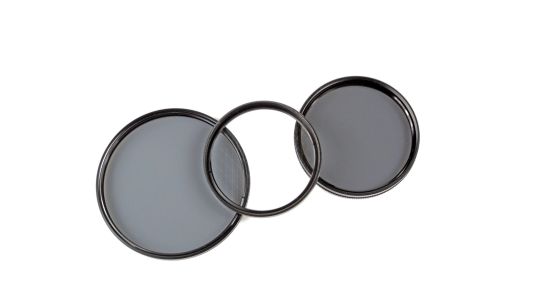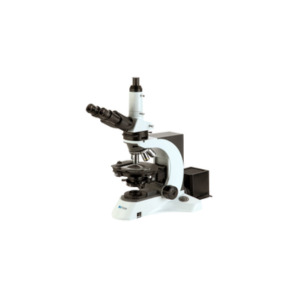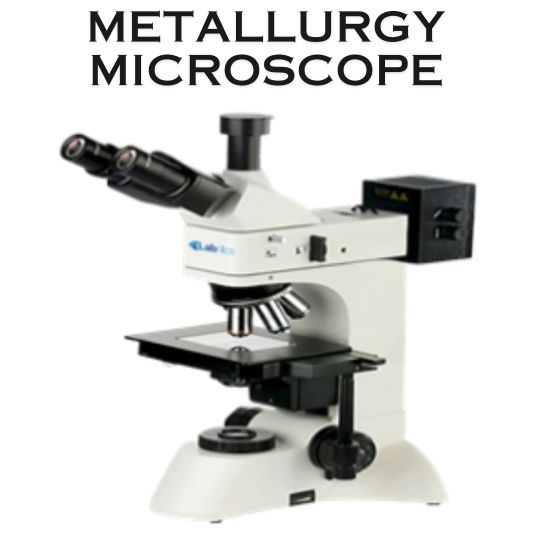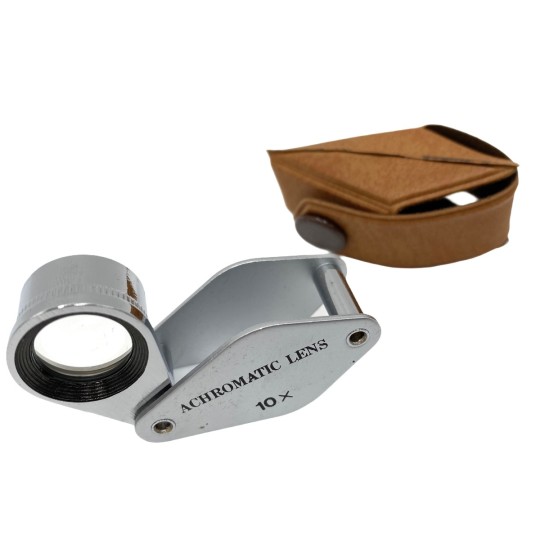#achromatic lens
Photo

Camera Lens Evolution
The camera lens has been an integral part of photography since its inception, and its evolution has been marked by numerous technological advancements. In this article, we will explore the major milestones in the evolution of camera lenses, from the earliest experiments to the advanced features of modern lenses.
Early Experiments
The earliest experiments with lenses date back to the ancient Greeks, who used glass spheres to magnify images. The camera obscura, a device that used a pinhole to project an image onto a surface, was also an early precursor to the modern camera lens. In the 17th century, scientists began experimenting with lenses made of polished glass to improve the quality of the projected image.
The Achromatic Lens
In 1757, English optician John Dollond invented the achromatic lens, a lens made of two different types of glass that reduced the problem of chromatic aberration. This innovation improved the quality of the projected image and paved the way for the development of modern camera lenses.
The Anastigmat Lens
In 1887, German optician Paul Rudolph invented the anastigmat lens, a lens that corrected for distortion and other optical aberrations. This innovation allowed photographers to capture sharp, clear images with greater accuracy and fidelity.
The Zoom Lens
In 1959, the first zoom lens was introduced by the Japanese company Bell & Howell. The zoom lens allowed photographers to adjust the focal length of the lens, which made it possible to capture images at different magnifications without changing lenses. The zoom lens was a major breakthrough in photography, allowing photographers to capture a wider range of images with a single lens.
Aspherical Lenses
In the 1980s, camera manufacturers began to experiment with aspherical lenses, which used non-spherical surfaces to correct for optical aberrations. Aspherical lenses were more complex and expensive to produce than traditional spherical lenses, but they offered improved image quality and reduced distortion.
Autofocus Lenses
In the 1980s and 1990s, camera manufacturers began to introduce autofocus lenses, which used motors and sensors to automatically adjust the focus of the lens. This feature made photography more accessible to casual users and helped to popularize photography as a hobby.
Image Stabilization
In the 1990s and 2000s, camera manufacturers introduced image stabilization technology, which used gyroscopic sensors to reduce camera shake and improve image quality. Image stabilization technology has become a standard feature in many modern camera lenses, and it has allowed photographers to capture sharper images in a wider range of conditions.
Conclusion
The evolution of camera lenses has been marked by numerous technological advancements that have revolutionized the field of photography. Each new development has expanded the possibilities of what is possible with photography, and has made it easier for photographers to capture sharp, clear, and accurate images. While the history of camera lenses is still being written, the legacy of these early optical pioneers lives on, inspiring and informing the work of photographers around the world.
Source: History of Camera – From Camera Obscura to SLR
#achromatic lens#Lens Evolution#camera lense#zoom lens#aspherical lenses#autofocus lenses#image stabilization
0 notes
Video
Christmas In Trafalgar Square by Brett Sheehan
Via Flickr:
Night shot of the Trafalgar Square Christmas stalls, using my Daguerreotype lens from Lomography. Nikon F4. CineStill 800T 35mm C41 film.
#Nikon F4#Daguerreotype Achromat 2.9/64mm lens#Lomography#CineStill 800T#35mm#C41#film#analog#colour#night#city#streets#London#Trafalgar Square#Christmas#Christmas decorations#people#pedestrians#stalls#lights#manilovefilm#flickr
2 notes
·
View notes
Text
Achromatic Lenses - Accurate Optics

Achromatic lenses are an important part of any optical system. They help to correct chromatic aberration, which is a type of distortion that can occur when light passes through a lens. Achromatic lenses are made up of two glass elements that are placed in precise alignment with each other. This helps to ensure that the colors arriving at the image sensor are correctly focused. To know more interesting facts about Achromatic Lenses, click here: https://bit.ly/3OaI5Uo
Call us at +91-9888877542!
0 notes
Text


VIKAVOLT + MILOTIC.
aka: Milovolt.
( water / electric. )
ability: illuminate, marvel scale or volt absorb. ( HH. )
evolves from Charjabug when traded with an Achro Scale.
Milovolt lives in the darkest depths of the ocean, using it's arms to dig into the sands of the seafloor to hunt for food. The yellow pattern on it's tail and their eyes emit a soft glow, surging with electricity.
ACHRO SCALE:
The Achro Scale is similar to the prism scale, yet is monotone and dull in color. It's name comes from 'achromatic' which means to have no hue or colorless. It could also be named after achromatic lens.
#milotic#vikavolt#pokemon#fusion#pokemon fusion#pokeart#art#artwork#oc#oc art#pokemon fanart#fakemon#evolution#digital art#pokemon art
11 notes
·
View notes
Text
just a random poll
4 notes
·
View notes
Text
Prosekai opinions :DD (credits go to @ace-and-the-rpg-horrors !! + added stuff)
Leo/Need:
Favorite Virtual Singer: Rin
Favorite member: Honami
Favorite Singer: Shiho
Favorite Commissioned song: NeedLe
Favorite Cover: Kagerou Daze
Favorite Event: Resonating with You or Stella After the Rain
Favorite Card Set: Carrying Our Thoughts and Feelings, Shooting Star!! (That’s what the Gacha is called anyway)
Favorite in unit ship: Poly/Need or ShihoSaki
Favorite NPC: lori
Favorite out of unit ship: Honakana, IchiNene, HaruSaki, ShihoAn
More More Jump:
Favorite Virtual Singer: Len
Favorite Member: Haruka
Favorite Singer: Shizuku
Favorite Commissioned Song: More Jump More or Newly Edgy Idols
Favorite Cover: Love Trial or Shoujo Rei
Favorite Event: You Deserve It! Break Time! Or Hear Me! Hopeful Show♪
Favorite Card Set: Casting Magic! Witch Craft
Favorite in unit ship: Polyjump or Minoai/minoharu
Favorite NPC: Nanamin
Favorite out of unit ship: AiriEna, Shizumafu, HaruSaki, Kohamino
Vivid Bad Squad:
Favorite Virtual Singer: Len, Rin and Meiko
Favorite Member: Akito (ew /j)
Favorite Singer: Akito and An
Favorite Commissioned Song: Gekokujou or CRaZY
Favorite Cover: ECHO
Favorite Event: Light Up The Fire or BURN MY SOUL
Favorite Card Set: Chasing That Day’s Light
Favorite in unit ship: Anhane
Favorite NPC: … taiga :DD (/j (kotaro mita))
Favorite out of unit ship: ToyaRui, MizuAn, MinoKoha (akitaro if that counts?)
Wonderlands x Showtime:
Favorite Virtual Singer: Luka and Miku
Favorite Member: Emu
Favorite Singer: Tsukasa
Favorite Commissioned Song: Mr. Showtime or Tondemo Wonders (i’m tondemo wonders biggest fan real not fake)
Favorite Cover: King, Positive Dance Time, Nonsense Bungaku and Ah, It’s a Wonderful Cat’s Life
Favorite Event: Smile of a Dreamer
Favorite Card Set: Hidden Circus and Never Ending Showtime
Favorite in unit ship: Emukasa !!
Favorite NPC: Hinata Otori
Favorite out of unit ship: ToyaRui and IchiNene
Nightcord at 25:
Favorite Virtual Singer: Kaito, Len and Luka
Favorite Member: Ena
Favorite singer: Mizuki and Ena
Favorite Commissioned Song: Kitty, Samsa, Theater, Jackpot Sad Girl and IDsmile
Favorite Cover: Self inflicted Achromatic and Bitter Choco Decoration
Favorite Event: Immiscible Discord and Saying goodbye to my masked self
Favorite Card Set: Poisonous Fangs and Peeking Shadows, Escape from Rain, Where is ♡? And Ball of the Marionettes
Favorite in unit ship: Kanaena
Favorite NPC: Mizuki’s Sister or Futaba
Favorite out of unit ship: MizuAn, Honakana and AiriEna
General:
Favorite unit: Vivid Bad Squad and Leo/Need
Unit Ranking: Vivid Bad Squad / Leo/Need, Nightcord at 25:00 / More More Jump, Wonderlands x Showtime (i love them i promise just not as much as the others 😭🙏🏻)
Unit with the best main story: Leo/Need
Unit with the best event stories: Vivid Bad Squad
Unit with the best cover songs: More More Jump
Unit with the best commissioned songs: Wonderlands x Showtime
Unit with the best cards: Nightcord at 25:00
Top five singers: Mizuki, Shiho, Ena, Shizuku and Akito
Top five characters: Ena, Honami, Akito, Emu and Haruka
Favorite virtual singer: Rin
Favorite Mixed Event: Standing Next to the Kind and Gentle You (i love honakana) and KAMIYAMA HIGH FESTIVAL!
Favorite Mixed Cart Set: Bon Voyage・Sailing and Bonding
Favorite Popular Ship: Honakana (??) or ShihoSaki / Poly/Need
Favorite rarepair: shizumafu and ichinene
Favorite Commissioned Song: NEO, Be The Music and Salamander !!
#pjsk#project sekai#prosekai#proseka#prsk#akito shinonome#tsukasa tenma#mafuyu asahina#ena shinonome#mizuki akiyama#rui kamishiro#emu otori#nene kusanagi#toya aoyagi#kohane azusawa#an shiraishi#minori hanasato#shizuku hinomori#haruka kiritani#airi momoi#kanade yoisaki#ichika hoshino#honami mochizuki#saki tenma#shiho hinomori#leo/need#vivid bad squad#nightcord at 25:00#more more jump#wonderlands x showtime
16 notes
·
View notes
Photo

Yasmin on Lomography Berlin Kino B&W 400
Chicago 2022
Canon EOS3, Lomography Achromat Art Lens
8 notes
·
View notes
Note
what's your fav vocaloid songs?
Thank you for asking me this, anonymous
Adrienne's 10th grade video2mp3 cultivated playlist: Side B (Side A was just all momrock and daft punk)
Tawagoto Speaker
Rolling Girl
Double Lariat
Witch
Butterfly on Your Right Shoulder (len ver LOL)
Alluring Secret - Black Vow (this should be considered on par with Magnet tbh the gay angst is off the charts)
Paradise of Light and Shadow (I'm so happy that this trilogy was not canned LMAO the worldbuilding blew me away at the time)
Two Breaths Walking
Paradichlorobenzene
One of Repetition
Hello, How Are You
Matryoshka
Servant of Evil
Just Be Friends
Bad End Night
Scissorloid
Madness of Duke Venomania (what can I say I like ensembles)
Self-Inflicted Achromatic
Shinitagari
The Little Mermaid
16 notes
·
View notes
Text

TITLE: Polarizing microscope/Weight-15 kg
DESCRIPTION:
The Fison Polarizing Microscope includes a 360° rotational polarizer, a 0.1° Vernier scale analyzer, and an inbuilt Bertrand lens with changeable center. It comprises strain-free plan achromatic objectives(4X, 10X, 20X, 40X, and 100X), EWF10X/22 eyepieces, and optical compensators such as the First Order Red Plate, Guarder Wave Plate, and Quartz Wedge. It uses a polarizer and an analyzer to ensure correct imaging inorthogonal and conoscopic polarizations.
0 notes
Text
Metallurgy Microscope
The Metallurgy Microscope NMM-100 is designed to meet the performance demands of the metal and alloy engineering industry. Equipped with a high-quality infinite far beam system. The unit has a coarse and micro-motion coaxial focusing system. It features a falling and transmission illumination system, an infinite long-distance flat field achromatic objective lens, and a built-in polarizing observation device.

0 notes
Text
Optical Microscopes: Revolutionizing the Fields of Science

Introduction
Optical microscopes have played a pivotal role in revolutionizing various fields of science by allowing us to see the microscopic world that was previously invisible to the naked eye. In this article, we will discuss the history and development of optical microscopes, their core components and working mechanism, various types of modern optical microscopes, and their applications in diverse fields of science.
History and Development
The earliest simple microscopes date back to the late 16th century and were limited to simple magnification lenses. Over time, microscope technology advanced significantly through the contributions of major scientists and inventors. In the early 17th century, Galileo Galilei and others improved basic compound microscopes by combining multiple convex lenses to achieve higher magnifications. In the mid-1600s, Antonie van Leeuwenhoek developed improved single-lens microscopes and was the first to observe bacteria and other microorganisms. Major advances occurred in the 19th century with the invention of the achromatic objective lens which reduced chromatic aberration, enabling higher magnifications. Other 19th century developments include mechanical stages to fix samples, oil immersion lenses, achromatic eyepiece lenses, standardized objectives, and illumination sources. In the 20th century, microscopes evolved to use optics, electronics, and new laser and digital imaging technologies. Today, advanced optical microscopes still play a very important role in scientific research and industrial applications.
Core Components and Working
A basic optical microscope consists of essential core components including light sources, lenses, mechanical stages, and eyepieces. Light from the illumination source travels through the objective lens closest to the sample. The objective primarily controls the magnification and resolution of the image. Light reflected from the sample then passes through further lens elements and tube lenses in the body of the microscope to the eyepiece. Eyepieces contain additional lenses and are adjusted by the user to suit their eyesight for a zoomed-out viewing of the magnified image. Modern optical microscopes also include mechanics to precisely control magnification, focus, andXYZ stage movements to scan samples. The core working principle involves the lenses bending and focusing beams of light to magnify tiny details of the specimen onto the retina or digital sensors.
Types of Modern Optical Microscopes
Compound Microscopes
- Upright Microscopes: Used for basic biology studies with components arranged vertically above the stage.
- Inverted Microscopes: Specifically designed for cell and tissue culture applications with components below the stage.
- Stereo Microscopes: Low power "macroscopes" used for 3D inspection of samples from various angles.
Specialized Microscopes
- Phase Contrast Microscopes: Enhance contrast of transparent/live samples by converting phase/structural variations into brightness variations.
- Fluorescence Microscopes: Fitted with light sources and filters to see fluorescent probes, proteins, DNA in living/fixed cells and tissues.
- Confocal Laser Scanning Microscopes: Capture high resolution optical sections and rebuild 3D images using point illumination and detectors.
- Digital Microscopes: Integrate high resolution digital cameras for live sample viewing, measurement and capturing images/videos for documentation.
0 notes
Text
0 notes
Text
Upright Metallurgical Microscope – MUM-400BD & 600B
Upright metallurgical microscope is another type of optical microscope used for examining the microstructure of opaque materials, particularly metals and alloys. Unlike the inverted metallurgical microscope, the light source in an upright metallurgical microscope is positioned above the specimen stage, and the objective lens and eyepiece are also above the sample. This configuration is more similar to traditional microscopes and is often used for examining polished and prepared thin sections of materials. Upright metallurgical microscopes are suited for the examination of metallurgical specimens such as micro-structure analysis, various materials testing, opaque object or transparent object. It is also equipped with yellow, blue, and green filters and equipped with long working distance plan achromatic objectives and field eyepieces to provide excellent optics quality and operational performance. These are the best instruments in research work metallography, mineralogy, precision engineering, electronics, etc.
Key Features :
Upright Design: As the name suggests, the upright metallurgical microscope has a conventional design where the light source, objective lens, and eyepiece are all located above the specimen stage.
Polished Thin Sections: This microscope is particularly suitable for examining thin sections of materials that have been polished to a transparent or semi-transparent state. These thin sections are typically prepared through slicing, grinding, and polishing techniques.
Brightfield Illumination: The primary mode of illumination for an upright metallurgical microscope is brightfield illumination, where light passes through the specimen from above. This allows for the observation of the sample’s microstructure and features.
Metallurgical Objectives: Similar to the inverted metallurgical microscope, the upright version also uses metallurgical objectives that are optimized for examining opaque materials. These objectives offer high numerical apertures and sufficient working distances for observing prepared thin sections.
Polarized Light Capability: Some models of upright metallurgical microscopes might also offer polarized light capabilities for enhanced contrast and analysis.
Image Analysis and Documentation: Like other advanced microscopes, upright metallurgical microscopes often come with digital imaging features for capturing, analyzing, and documenting microstructural details.
Sample Stage: The sample stage can be adjusted to accommodate different sizes of prepared thin sections.
#manufacture#industrial equipment#manufacturer#metallurgical#metallographicequipments#metallurgicalmicroscopes#microscope#microscopes#upright microscopes#metallurgical microscopes#upright metallurgical microscopes#optical microscopes
1 note
·
View note
Text
Ruper x10 Achromatic Lens Loupe (14mm)
This is the highest quality x10 field loupe that we sell. It is made in Japan by the famous Ruper factory and has a superb high quality achromatic lens, which is the clearest lens available. It is a chrome plated loupe and comes with small carry pouch.

View On WordPress
0 notes
Text
Future of Microscope Objectives Tackling Future Challenges
Miniaturization for added mobility
UV Microscopy-short wavelengths for increased resolution and contrast enhancement
Automated systems for more throughput
Liquid lens integration for quick focus adjustments
Cilika from the house of Medprime Technologies, a medical device company, is a major breakthrough in field of future-ready technology pertaining to pathology, telepathology, teleradiology and telemedicine arenas. The integration of tablets and smartphones with microscopy brings to the table a multitude of ways to process, share and analyze data directly from the microscope.
Cilika Portable Series
Cilika Portable, world’s first smartphone integrated microscope, is the perfect choice for work-from-home and extensive travelling, capturing wide field of view with True View Technology. Its unmatched high-quality imaging, battery backup and lightweight body with travel bag makes it an undisputable choice for field visits, medical camps and seminars. Available in both standard and premium variants, it has oil immersion plan achromat lenses and other state-of-the-art features.
Read more here - https://www.medprimetech.com/blog/the-bright-future-of-digital-microscopy/
0 notes
Photo

Joseph von Fraunhofer was born on March 6, 1787. A German physicist and optical lens manufacturer. He made optical glass, an achromatic telescope, and objective lenses. He also invented the spectroscope and developed diffraction grating. In 1814, he discovered and studied the dark absorption lines in the spectrum of the sun now known as Fraunhofer lines. Fraunhofer produced various optical instruments for his firm. This included the Fraunhofer Dorpat Refractor used by Struve (delivered 1824 to Dorpat Observatory), and the Bessel Heliometer (delivered posthumously), which were both used to collect data for stellar parallax.
#joseph von fraunhofer#inventors#spectroscope#diffraction grating#spectra#physics#optics#light#science#science history#science birthdays#on this day#on this day in science history
1 note
·
View note
